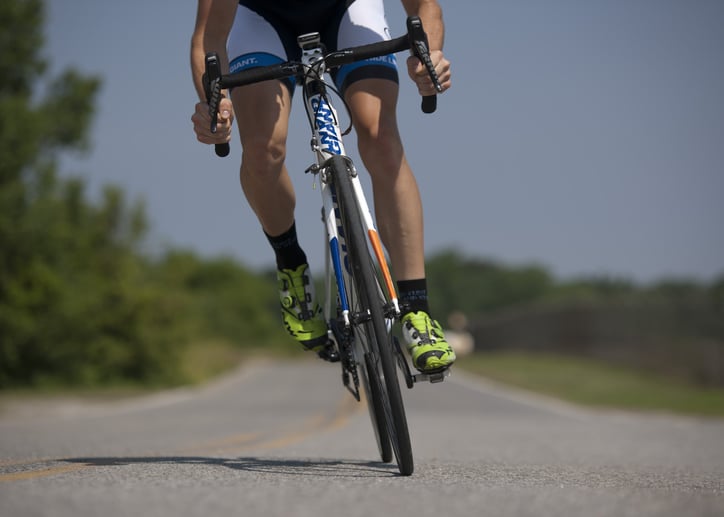
These days, many people are making lifestyle changes to improve their health and wellness. Some are eliminating soft drinks from their diets, some are running marathons, and others are trading their car keys for bicycles. As commuting to and from work on a bicycle is becoming increasingly popular, it's important to remember the laws regarding the rights and responsibilities of bicyclists in New Jersey.
Lights and Reflectors
If it's dark outside, you must have functional lights and reflectors on your bike. According to N.J.S.A. 39:4-10, you must have a red light that is visible from least 500 feet as well as a red reflector at the back end of your bicycle. On the front, you're required to affix a white headlight or lamp that is visible from at least 500 feet in front of the bike.
Brakes and Bells
New Jersey law requires all bicycles to have working brakes that cause the wheels to skid when the cyclist is attempting to stop on a flat, clean, dry road or surface. Bicycles must also have a bell, horn, or something similar that is audible from at least 100 feet away. Whistles and sirens are not acceptable.
Helmet Use
There are strict helmet laws in New Jersey that apply to persons under the age of 17. A person under 17 who is riding a bicycle, a passenger on a bicycle, or being towed by a bicycle must wear a properly fitting safety helmet. That's the short version of the New Jersey Helmet Law. There are exceptions for a cyclist or passenger on a bike in areas where motor vehicles are not allowed. These areas include bike paths, trails, boardwalks, and other places specifically designated for bicycle traffic. If you are riding in one of these areas and have to cross a road where motor vehicles are allowed, however, you must walk your bike across the street. If you are unsure whether a helmet is required in a certain area, it's best to err on the side of caution. Even in areas without automobile traffic, wearing a helmet can prevent serious injuries.
Rights and Duties
N.J.S.A. 39:4-14.1 expressly states that bicyclists enjoy the same rights as that of the driver of a motor vehicle. But with those rights come the same duties and responsibilities that an automobile driver has. That means you must obey traffic laws and use signals when you are on your bike just as you would when operating a motor vehicle.
Motorized Bicycles
Title 39 of the Motor Vehicles and Traffic Regulations defines a bicycle as "any two wheeled vehicle having a rear drive which is solely human powered and having a seat height of 25 inches or greater when the seat is in the lowest adjustable position." Laws pertaining to motorized bicycles are different from those regarding human powered bicycles. For information pertaining to motorized bikes, see the New Jersey Department of Transportation's Moped Manual.
Whether you are a cyclist, motorist, or pedestrian in New Jersey, it's important to understand the local bike laws. There are more bicycles on the roadways now than ever before. That means the potential for bicycle-related accidents is also on the rise. If you have been in an accident involving a bicycle, contact the Mark Law Firm's experienced personal injury attorneys for help.



.svg)